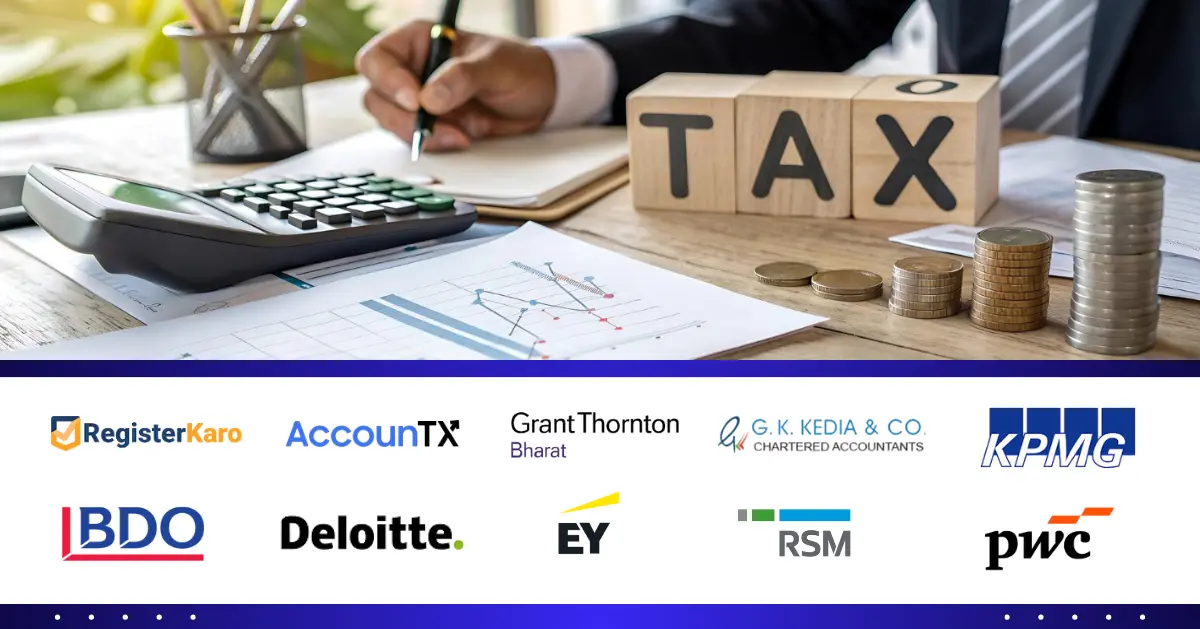
The Foundation of Tax Concepts in India
Taxes. We all know they’re unavoidable, but they don’t have to be dull, right? India’s tax collection adds more than 10% to its GDP – that’s an enormous portion driving the country’s growth! So, as a taxpayer, knowing basic tax concepts can make the process easier.
Taxation in India operates on a three-tier structure involving the Central Government, State Governments, and local bodies. This multi-layered approach ensures that each time you pay your taxes, a part of it goes towards constructing roads, funding education, and driving India’s economy.
India follows a progressive tax system where rates increase with higher income levels. This approach aims to distribute the tax burden fairly across different income groups. The higher your earnings, the more you contribute to the national treasury.
Key Tax Concepts in India: Laws and Authorities
India’s tax system is not only vast but also well-structured, with specific laws and authorities dedicated to the administration and enforcement of taxes.
Key Taxation Law:
- Income Tax Act, 1961: Governs the taxation of income, specifying tax rates, exemptions, and the procedure for assessment.
- Goods and Services Tax (GST) Act, 2017: Consolidates various concepts of indirect taxes under a single unified framework, making compliance easier for businesses.
- Customs Act, 1962: Governs the taxation of goods imported into India.
Key Authorities:
- Central Board of Direct Taxes (CBDT): Administers direct taxes like income tax, corporate tax, and capital gains tax.
- Central Board of Indirect Taxes and Customs (CBIC): Oversees indirect taxes such as GST, customs duties, and excise duties.
- State Tax Departments: Manage state-level taxes like SGST, stamp duty, and excise duties.
- Directorate General of GST Intelligence (DGGI): Investigates and enforces GST law, detecting tax fraud.
- Income Tax Appellate Tribunal (ITAT): Adjudicates income tax disputes.
- Registrar of Companies (RoC): Registers companies and maintains corporate records.
Types of Taxes in India
The Indian tax system divides taxes into two main categories: direct and indirect taxes. This classification helps organize the tax collection process efficiently.
1. Concept of Direct Taxes
Direct and indirect taxes differ primarily in who bears the tax burden. Direct taxes fall directly on individuals and organizations. The person who earns the income pays the tax without the ability to pass this burden to others.
- Income Tax: Levied on individual earnings
- Corporate Tax in India: Applied to company profits
- Wealth Tax: Based on the value of specified assets
- Capital Gains Tax: On profits from asset sales
Key Features of Direct Taxes:
- Levied directly on income or profits.
- The responsibility of paying these taxes lies with the individual or business.
- More progressive and aimed at the equitable distribution of wealth.
2. Concept of Indirect Taxes
Indirect taxes are taxes levied on goods and services rather than income. These taxes are paid by consumers at the time of purchase and collected by intermediaries, like retailers or service providers, who pass them on to the government.
- Goods and Services Tax (GST): GST is a single tax system applied across India, making it easier for businesses to comply. This Tax replaced various other indirect taxes to simplify the structure.
- Customs Duty: This is levied on goods imported into India.
- Excise Duty: Although GST has largely replaced it for most goods, excise duty is still applicable to certain goods, particularly those produced in India.
- Service Tax: Service tax is a form of indirect tax levied on services provided by service providers. However, service tax was subsumed under GST from 2017.
Key Features of Indirect Taxes:
- Collected from third parties (such as consumers) who bear the tax burden.
- Applicable to goods, services, and transactions.
- Less progressive and applied uniformly, regardless of the taxpayer’s income.
3. Other Taxes in India
In addition to direct and indirect taxes, several other taxes contribute to India’s tax system:
- Property Tax: Levied by local authorities on real estate properties. It is paid by property owners based on the value of their property.
- Professional Tax: This is a state-level tax levied on professions, trades, and employments.
Concept of Income Tax
Income Tax is a charge imposed by the government on the income you earn. The amount of tax you pay depends on the type of income and the exemptions or deductions you are eligible for.
Types of Income That Are Taxable:
- Salary Income: This is the money you earn from your job, including your basic salary, bonuses, allowances, and other employment-related benefits.
- Business or Professional Income: If you run a business or provide professional services, the profits you earn from these activities are taxed under this category. This includes freelance income or earnings from self-employment.
- Capital Gains: When you sell assets like land, property, or investments (such as stocks and mutual funds), the profit earned from these sales is considered capital gains and is subject to tax.
- Income from Other Sources: This category covers income from things like interest earned on savings accounts, dividends from investments, or even winnings from lotteries or gambling.
Deduction and Exemptions:
- Section 80C: You can reduce your taxable income by up to ₹1.5 lakh if you invest in specific instruments, such as Public Provident Fund (PPF), National Savings Certificates (NSC), National Pension Scheme (NPS), or pay life insurance premiums.
- Section 10(14): Certain allowances like House Rent Allowance (HRA) and transport allowance are not taxed.
- Standard Deduction: If you’re a salaried individual or pensioner, you can automatically claim a ₹50,000 deduction from your taxable income.
Tax on Capital Gains:
- Short-Term Capital Gains (STCG): If you sell an asset within 36 months of owning it, the profits are taxed at 15%, especially for securities like stocks and mutual funds.
- Long-Term Capital Gains (LTCG): For assets held for over 36 months, the tax rate is 20%, but with benefits from indexation. However, for listed shares, it’s taxed at 10% (without indexation) if the gains exceed ₹1 lakh.
Tax Concepts in India: Tax Planning For Individuals
The concept of tax planning helps maximize savings while ensuring compliance. For individuals, understanding the concept of income tax in India, knowing the Tax Slabs 2025 is the first step. This knowledge forms the foundation for effective tax optimization.
Individual Tax Planning
Smart tax planning strategies include:
- Investing in tax-saving instruments under Section 80C
- Purchasing health insurance for Section 80D benefits
- Planning home loan EMIs to maximize interest deductions
- Restructuring salary components with your employer
Remember, the concept of tax planning should align with your overall financial goals. Don’t invest solely for tax benefits without considering returns and liquidity needs.
Business Tax Planning
For businesses, corporate taxation in India offers various optimization opportunities:
- Choosing the right business structure
- Strategic timing of income recognition and expense claims
- Utilizing depreciation benefits
- Taking advantage of special economic zone benefits
- Implementing proper GST compliance systems
Proper documentation and compliance remain critical for both individuals and businesses. The tax authorities have strengthened enforcement mechanisms with advanced data analytics.
The Concept of Tax Evasion and Tax Avoidance
While many people use the terms tax evasion and tax avoidance interchangeably, they are quite different concepts, and understanding the distinction is crucial.
Tax Evasion
Tax evasion refers to the illegal practice of not paying taxes owed to the government. This may involve underreporting income, inflating deductions, or hiding money in foreign bank accounts. It is a criminal offense and can lead to penalties, interest on unpaid taxes, or even imprisonment.
Tax Avoidance
Tax avoidance, on the other hand, is the legal use of tax laws to reduce one’s tax liabilities. This includes taking advantage of exemptions, deductions, and credits allowed by the Income Tax Act, such as:
- Investing in tax-saving instruments (like PPF or ELSS).
- Claiming deductions for education or home loans under sections 80E and 80C.
Though it is legal, tax avoidance should be done carefully to ensure it remains within the boundaries of the law.
Challenges in Indian Tax Concepts
Despite significant improvements, taxation in India faces several challenges:
- Complex compliance requirements for small businesses
- Frequent changes in tax laws and regulations
- Disputes and litigation leading to locked-up revenue
- Tax evasion in certain sectors
- Need for further simplification of direct and indirect taxes
The government continues to address these issues through policy reforms. The focus remains on simplifying compliance, reducing litigation, and expanding the tax base.
The Future of Taxation in India
The future of taxation in India looks promising with continued reforms. The government aims to:
- Further simplify tax laws and procedures
- Reduce corporate tax in India to boost manufacturing
- Rationalize GST rates and procedures
- Leverage technology for better compliance
- Align the tax system with global best practices
These measures will strengthen India’s position and will also ensure fair and equitable taxation for all citizens.
Conclusion
India’s taxation journey has matured from complexity to greater transparency. Mastering concepts like direct taxes, GST, tax planning, and legal savings methods will empower you to make smarter financial choices and minimize your tax burden.
✅ Ready to make tax planning easy and maximize your savings? Contact RegisterKaro today and simplify your tax journey!
Frequently Asked Questions
You file if your total income beats the basic exemption limit, or you want a refund. Filing on time keeps you compliant and speeds up loans or visa approvals.




